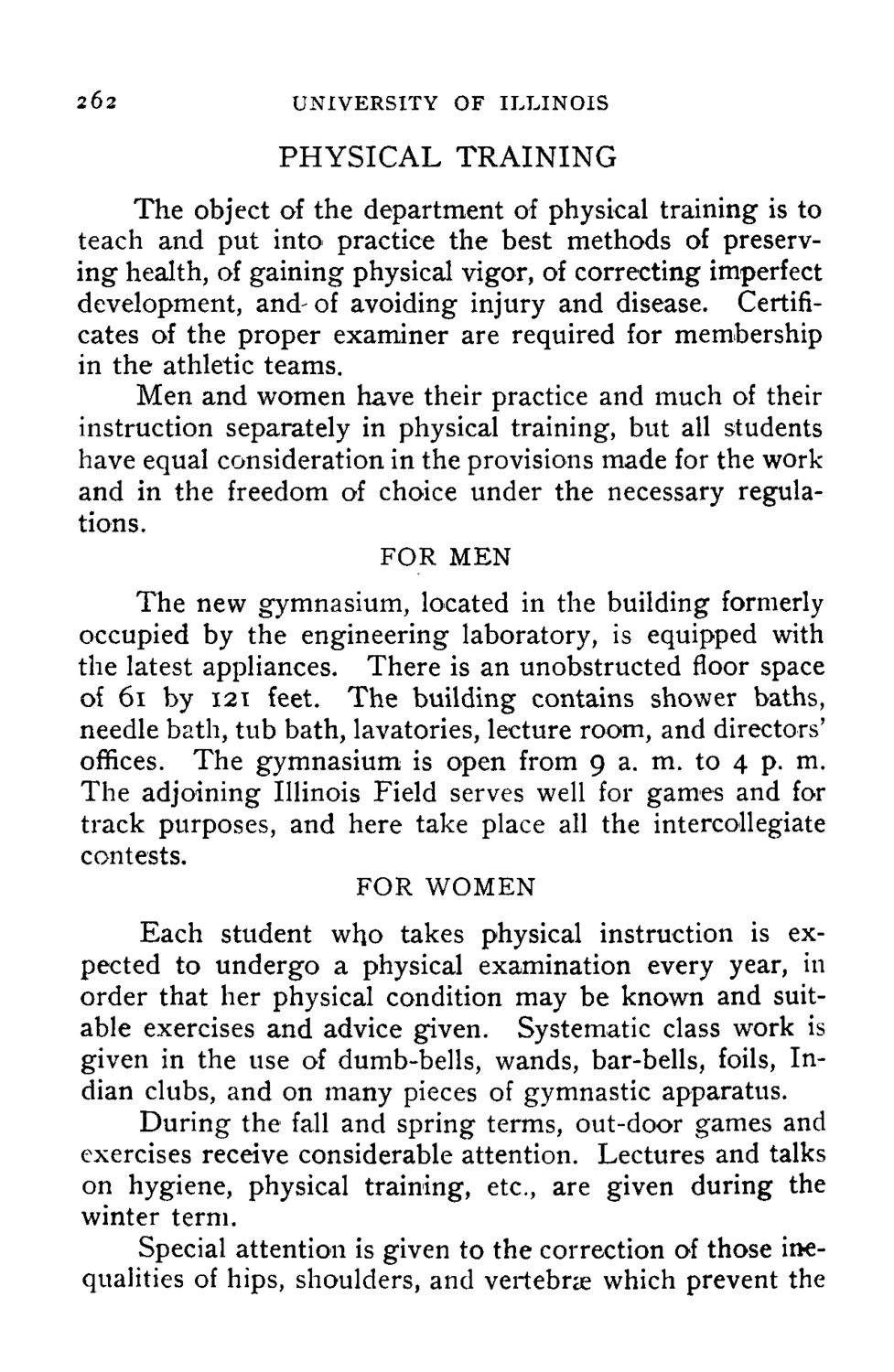| |
| |
Caption: Course Catalog - 1897-1898
This is a reduced-resolution page image for fast online browsing.

EXTRACTED TEXT FROM PAGE:
262 UNIVERSITY OF ILLINOIS PHYSICAL TRAINING The object of the department of physical training is to teach and put into practice the best methods of preserving health, of gaining physical vigor, of correcting imperfect development, and- of avoiding injury and disease. Certificates of the proper examiner are required for membership in the athletic teams. Men and women have their practice and much of their instruction separately in physical training, but all students have equal consideration in the provisions made for the work and in the freedom of choice under the necessary regulations. FOR MEN The new gymnasium, located in the building formerly occupied by the engineering laboratory, is equipped with the latest appliances. There is an unobstructed floor space of 61 by 121 feet. The building contains shower baths, needle bath, tub bath, lavatories, lecture room, and directors' offices. The gymnasium is open from 9 a. m. to 4 p. m. The adjoining Illinois Field serves well for games and for track purposes, and here take place all the intercollegiate contests. FOR WOMEN Each student who takes physical instruction is expected to undergo a physical examination every year, in order that her physical condition may be known and suitable exercises and advice given. Systematic class work is given in the use of dumb-bells, wands, bar-bells, foils, Indian clubs, and on many pieces of gymnastic apparatus. During the fall and spring terms, out-door games and exercises receive considerable attention. Lectures and talks on hygiene, physical training, etc., are given during the winter term. Special attention is given to the correction of those inequalities of hips, shoulders, and vertebras which prevent the
| |